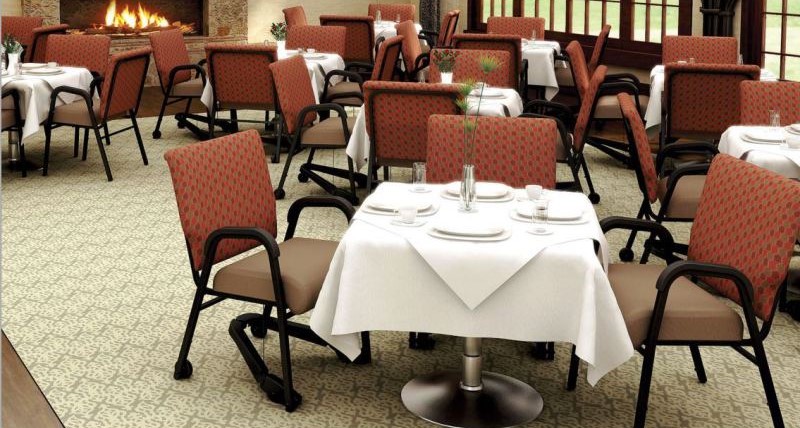The right chair can create positive, life-affirming experiences for residents.
By Wendy D’Alessandro
It was an unusual start to a Senior Housing Forum partner phone interview.
ComforTek CEO Randy Schellenberg, whose company provides seating solutions for senior living and long-term care communities, asked those of us on the call, “Are you in your office at your desk? Are any of your colleagues in the office with you?”
Yes and no, unless I counted my snoring dog in the corner.
Randy then asked us to lean back in our chairs and put our feet up on our desk.
My mind started chattering as soon as my feet hit the desk. This chair never did fit me right. My legs feel uncomfortable on the desk, and I feel uneasy because my chair keeps rolling back a bit. I wondered, What point is Randy trying to make? That chairs in senior living should be ergonomically correct?
Turns out, Randy was less about making a point and more about enlightening our perspective on chairs, mobility, and how it feels for residents when neither is right. Randy explained:
-
People with limited mobility feel vulnerable, awkward, and even embarrassed when something as simple as sitting in and standing up from a chair is no longer so simple.
-
People hate to cause a fuss and stand out among their peers, but that’s what happens when caregivers struggle to push a seated resident closer to a table, or a spouse can’t adjust the angle of the chair so her husband can pivot safely to sit with the rest of the group.
-
Caregivers who struggle with assisting residents to their seats or with moving seated residents closer to a table, for example, create situations where residents feel bad or self-conscious because they think they’re bothersome.
A chair isn’t just a chair
According to Randy, the right chair can create positive, life-affirming experiences for residents. “Anytime you can get people to sit in a normal chair, it creates a sense of self-worth; it makes them feel like everyone else even though their circumstances have changed,” said Randy. “It gives a person a sense of ‘I’m still here’.”
A chair is a caregiver’s tool
For inspiration and perspective on designing a chair for the senior living industry, Randy and his team looked not to residents, administrators, and interior designers (although the chairs are certainly comfortable, sturdy, and attractive), but to those who provide residents with daily care and assistance — the caregivers, whether they are a spouse, a CNA, a volunteer, or family member.
“By designing chairs that make caregivers’ lives easier, we knew we could make residents’ lives better too,” said Randy.
The team set out to design chairs that would:
-
Move easily
-
Swivel conveniently
-
Lock securely
-
Prevent injury
And they did. ComforTek Titan Series (Titan, Titan 2 and Titan Plus) makes it easy for caregivers to safely move seated residents and assist residents moving from a walker or wheelchair to their seats.
The team also designed Royal EZ, a patented universal device that providers can use to “upgrade” existing standard chairs so caregivers can safely and easily move seated residents. The Royal EZ device is the next best thing for providers who aren’t ready to purchase ComforTek chairs.
In future articles we’ll take a closer look at ComforTek and its full line of furniture for senior living and long-term care communities, starting with the ComforTek Titan series. For now, check out how easy it is for caregivers to move seated residents closer to the table in a ComforTek Titan series chair.
Click on the button below to visit ComforTek’s website or call 1-888-678-2060 to learn more:
Download a PDF copy of this article by clicking on the button below:









